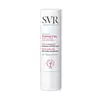What's inside
What's inside
 Key Ingredients
Key Ingredients

 Benefits
Benefits

 Concerns
Concerns

 Ingredients Side-by-side
Ingredients Side-by-side

Petrolatum
EmollientParaffinum Liquidum
EmollientCera Microcristallina
Emulsion StabilisingOctyldodecanol
EmollientParaffin
PerfumingButyrospermum Parkii Butter
Skin ConditioningPanthenol
Skin ConditioningSilica
AbrasiveVp/Hexadecene Copolymer
Glycerin
HumectantTocopheryl Acetate
AntioxidantDisteardimonium Hectorite
StabilisingParfum
MaskingAllantoin
Skin ConditioningBisabolol
MaskingPropylene Carbonate
SolventIsocetyl Alcohol
EmollientAsiaticoside
AntioxidantMadecassic Acid
Skin ConditioningAsiatic Acid
Skin ConditioningCeramide NP
Skin ConditioningSodium Hyaluronate
HumectantBHT
AntioxidantCetyl Alcohol
EmollientRosa Canina Fruit Oil
EmollientCitric Acid
BufferingTocopherol
AntioxidantPetrolatum, Paraffinum Liquidum, Cera Microcristallina, Octyldodecanol, Paraffin, Butyrospermum Parkii Butter, Panthenol, Silica, Vp/Hexadecene Copolymer, Glycerin, Tocopheryl Acetate, Disteardimonium Hectorite, Parfum, Allantoin, Bisabolol, Propylene Carbonate, Isocetyl Alcohol, Asiaticoside, Madecassic Acid, Asiatic Acid, Ceramide NP, Sodium Hyaluronate, BHT, Cetyl Alcohol, Rosa Canina Fruit Oil, Citric Acid, Tocopherol
Ricinus Communis Seed Oil
MaskingCaprylic/Capric Triglyceride
MaskingHelianthus Annuus Seed Oil
EmollientOleic/Linoleic/Linolenic Polyglycerides
EmollientHelianthus Annuus Seed Wax
Skin ConditioningRicinus Communis Seed Oil, Caprylic/Capric Triglyceride, Helianthus Annuus Seed Oil, Oleic/Linoleic/Linolenic Polyglycerides, Helianthus Annuus Seed Wax, Butyrospermum Parkii Butter, Hydrogenated Castor Oil, Copernicia Cerifera Cera, Camelina Sativa Seed Oil, Tocopherol, Ascorbyl Palmitate, Citric Acid
Ingredients Explained
These ingredients are found in both products.
Ingredients higher up in an ingredient list are typically present in a larger amount.
This ingredient is also known as shea butter. It is an effective skin hydrator and emollient.
Emollients help soothe and soften your skin. It does this by creating a protective film on your skin. This barrier helps trap moisture and keeps your skin hydrated. Emollients may be effective at treating dry or itchy skin.
Shea butter is rich in antioxidants. Antioxidants help fight free-radicals, or molecules that may harm the body. It is also full of fatty acids including stearic acid and linoleic acid. These acids help replenish the skin and keep skin moisturized.
While Shea Butter has an SPF rating of about 3-4, it is not a sunscreen replacement.
Shea butter may not be fungal acne safe. We recommend speaking with a professional if you have any concerns.
Learn more about Butyrospermum Parkii ButterCitric Acid is an alpha hydroxy acid (AHA) naturally found in citrus fruits like oranges, lemons, and limes.
Like other AHAs, citric acid can exfoliate skin by breaking down the bonds that hold dead skin cells together. This helps reveal smoother and brighter skin underneath.
However, this exfoliating effect only happens at high concentrations (20%) which can be hard to find in cosmetic products.
Due to this, citric acid is usually included in small amounts as a pH adjuster. This helps keep products slightly more acidic and compatible with skin's natural pH.
In skincare formulas, citric acid can:
While it can provide some skin benefits, research shows lactic acid and glycolic acid are generally more effective and less irritating exfoliants.
Most citric acid used in skincare today is made by fermenting sugars (usually from molasses). This synthetic version is identical to the natural citrus form but easier to stabilize and use in formulations.
Read more about some other popular AHA's here:
Learn more about Citric AcidTocopherol (also known as Vitamin E) is a common antioxidant used to help protect the skin from free-radicals and strengthen the skin barrier. It's also fat soluble - this means our skin is great at absorbing it.
Vitamin E also helps keep your natural skin lipids healthy. Your lipid skin barrier naturally consists of lipids, ceramides, and fatty acids. Vitamin E offers extra protection for your skin’s lipid barrier, keeping your skin healthy and nourished.
Another benefit is a bit of UV protection. Vitamin E helps reduce the damage caused by UVB rays. (It should not replace your sunscreen). Combining it with Vitamin C can decrease sunburned cells and hyperpigmentation after UV exposure.
You might have noticed Vitamin E + C often paired together. This is because it is great at stabilizing Vitamin C. Using the two together helps increase the effectiveness of both ingredients.
There are often claims that Vitamin E can reduce/prevent scarring, but these claims haven't been confirmed by scientific research.
Learn more about Tocopherol